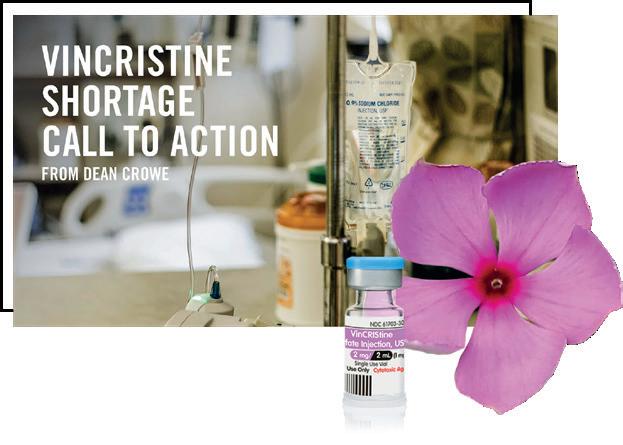
3 minute read
Clinical Research Insider Summit No. 11
Natural products for the development of new drugs
An extensive review of therapeutic agents approved worldwide after 39 years has identified that about 32% of the small molecules approved during that period correspond to natural products (Newman & Cragg, 2020). Additionally, more than 60% of synthetic drugs are derived from natural products, of which the natural active compound constitutes 75% of cancer drugs. (Sharifi-Rad, et al., 2019).
Advertisement
Vincristine, an alkaloid of natural origin, isolated from the plant Catharanthus roseus L., included in the list of essential medicines of the World Health Organization, has been of great importance to treat different types of cancer, such as acute lymphoblastic leukemia, diffuse large B-cell lymphoma, among others. In 2019, there was an acute shortage of vincristine sulfate globally, leaving the oncology community in an ongoing struggle to find an immediate solution for the treatment of pediatric patients. (Palmer, 2019).

This naturally occurring drug has complex chemical structures that are often difficult to replicate through synthetic chemistry. Other drugs that come from natural products are: Qutenza®, a patch used for neuropathic pain and whose active ingredient is capsaicin isolated from the pepper plant, Capsicum annuum L., also, the drug Taxol® with antitumor activity whose active ingredient paclitaxel was isolated from the bark of conifers such as Taxus baccata L., or the case of metformin used for the treatment of type II diabetes worldwide, which has emerged inspired by the active ingredient galegina, from the plant Galega officinalis L.
Despite the importance that natural products deserve for obtaining new drugs, the structural complexity of the molecules, their separation and elucidation, in addition to the impact that species can suffer, has led to natural products being the inspiration for many of the synthetic or semisynthetic drugs, such as, anticancer drug Yondelis®, approved for the treatment of soft tissue sarcoma and recurrent ovarian cancer, and whose synthetic active ingredient, trabectedin, was initially obtained from a marine organism (Ecteinascidia turbinata), and after deciphering its biosynthetic route it was possible to find new chemical precursors for its formation. Nature continues and will continue to be a great source of inspiration for the generation of new medicines.
Claudia Mejia Morales PhD

Research and Development Analyst at Drox Health Science.
References
Newman, D. J., & Cragg, G. M. (2020). Natural products as sources of new drugs over the nearly four decades from 01/1981 to 09/2019. Journal of natural products, 83(3), 770-803.
Palmer, E. (2019). Pfizer scrambles to fill void after Teva stops making chemo drug often given to children. FiercePharma. Published October 15, 2019.
Sharifi-Rad, J., Ozleyen, A., Boyunegmez Tumer, T., Oluwaseun Adetunji, C., El Omari, N., Balahbib, A., ... & C. Cho, W. (2019). Natural products and synthetic analogs as a source of antitumor drugs. Biomolecules, 9(11), 679.










